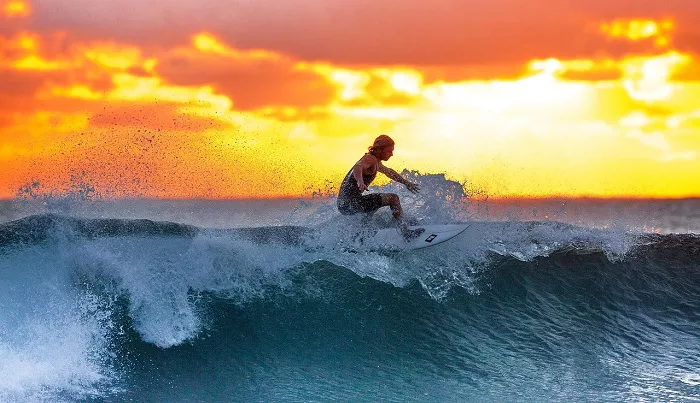The art of surfing, with its breathtaking grace and deep cultural roots, is often synonymous with Hawaii. But who first stood upon a wooden board and harnessed the power of the ocean? The answer is woven into the traditions, legends, and daily life of ancient Hawaiians, for whom surfing was far more than a sport—it was a spiritual practice, a social custom, and a defining element of their identity. While the exact individual who “invented” surfing remains unknown, the origins of heʻe nalu (wave sliding) in Hawaii stretch back centuries, shaped by Polynesian settlers, royal patronage, and the islands’ unique relationship with the sea.This article explores the fascinating history of surfing in Hawaii, tracing its evolution from sacred ritual to global phenomenon. We’ll examine the early practitioners, the cultural significance of the sport, and how it survived colonization to become a beloved pastime today.
The Polynesian Pioneers: Bringing Surfing to Hawaii
Surfing did not originate in Hawaii, but it was perfected there. The earliest forms of wave riding can be traced back to ancient Polynesia, where fishermen and warriors used wooden planks to navigate coastal waters. When Polynesian voyagers settled in Hawaii around the 4th century CE, they brought their ocean traditions with them. Over time, Hawaiians refined these techniques, crafting specialized boards and developing a deep spiritual connection to the waves.
Archaeological evidence suggests that surfing was widespread across Polynesia, with variations found in Tahiti, Samoa, and New Zealand. However, Hawaii’s consistent waves and warm waters made it the ideal environment for the sport to flourish. Unlike other Polynesian societies, where surfing was mostly utilitarian, Hawaiians elevated it to an art form, integrating it into their religion, politics, and social hierarchy.
The Sacred Sport: Surfing in Ancient Hawaiian Culture
In pre-contact Hawaii: surfing was more than recreation—it was a sacred act. Hawaiians believed that the ocean was inhabited by deities, and riding waves was a way to honor them. Chiefs (aliʻi) and commoners alike participated, though the best waves and finest boards were often reserved for royalty.
Spiritual Significance: Surfing was closely tied to Hawaiian religion. Kahuna (priests) performed rituals to ensure good waves, offering prayers and sacrifices to the gods of the sea. Certain breaks were considered sacred, and only those with sufficient mana (spiritual power) were allowed to ride them. Legends spoke of demigods like Kamohoaliʻi, the shark god, who could control the ocean’s swells.
Social and Political Role: Surfing also reinforced social order. Chiefs demonstrated their prowess by mastering the waves, and competitions were held to settle disputes or showcase skill. The sport was so revered that some chiefs would delay important meetings or battles for optimal surfing conditions.
The Birth of Modern Hawaiian Surfing
While surfing was already deeply ingrained in Hawaiian culture, the 18th and 19th centuries brought significant changes. The arrival of European missionaries and the decline of traditional Hawaiian society nearly erased the sport. However, a few key figures ensured its survival.
Early Western Encounters: Captain James Cook’s crew, who arrived in Hawaii in 1778, were among the first Europeans to witness surfing. They marveled at the Hawaiians’ ability to ride waves with such ease, though missionaries later discouraged the practice, deeming it frivolous and immoral.
The Revival Under Hawaiian Royals: Despite outside pressures, Hawaiian royalty kept surfing alive. King Kamehameha I was an avid surfer, and later, Princess Kaʻiulani famously surfed in Waikīkī, introducing the sport to foreign dignitaries. Their influence helped preserve heʻe nalu during a time of cultural suppression.
The Birth of Modern Hawaiian Surfing
While surfing was already deeply ingrained in Hawaiian culture, the 18th and 19th centuries brought significant changes. The arrival of European missionaries and the decline of traditional Hawaiian society nearly erased the sport. However, a few key figures ensured its survival.
Early Western Encounters: Captain James Cook’s crew, who arrived in Hawaii in 1778, were among the first Europeans to witness surfing. They marveled at the Hawaiians’ ability to ride waves with such ease, though missionaries later discouraged the practice, deeming it frivolous and immoral.
The Revival Under Hawaiian Royals: Despite outside pressures, Hawaiian royalty kept surfing alive. King Kamehameha I was an avid surfer, and later, Princess Kaʻiulani famously surfed in Waikīkī, introducing the sport to foreign dignitaries. Their influence helped preserve heʻe nalu during a time of cultural suppression.
Conclusion
The question of who invented surfing in Hawaii may never have a definitive answer, but that mystery only adds to its allure. What we do know is that surfing was born from the ingenuity and reverence of the Hawaiian people, who transformed a simple act of wave riding into a profound cultural tradition. From the sacred rituals of ancient kahuna to the global stardom of Duke Kahanamoku, surfing’s journey reflects the resilience and spirit of Hawaii itself.Today, as surfers around the world paddle into the swell, they ride in the wake of those early Hawaiian pioneers—the unnamed masters who first understood the ocean’s rhythm. The waves they once conquered still break upon the same shores, a timeless tribute to the birthplace of surfing. Whether as sport, art, or spiritual practice, heʻe nalu remains Hawaii’s greatest gift to the world.
Related topics
- HOW TO TRAIN FOR BIG WAVE SURFING?
- HOW MANY CALORIES DO YOU BURN SURFING?
- THE 3 BEST WIND SPEED FOR WINDSURFING

